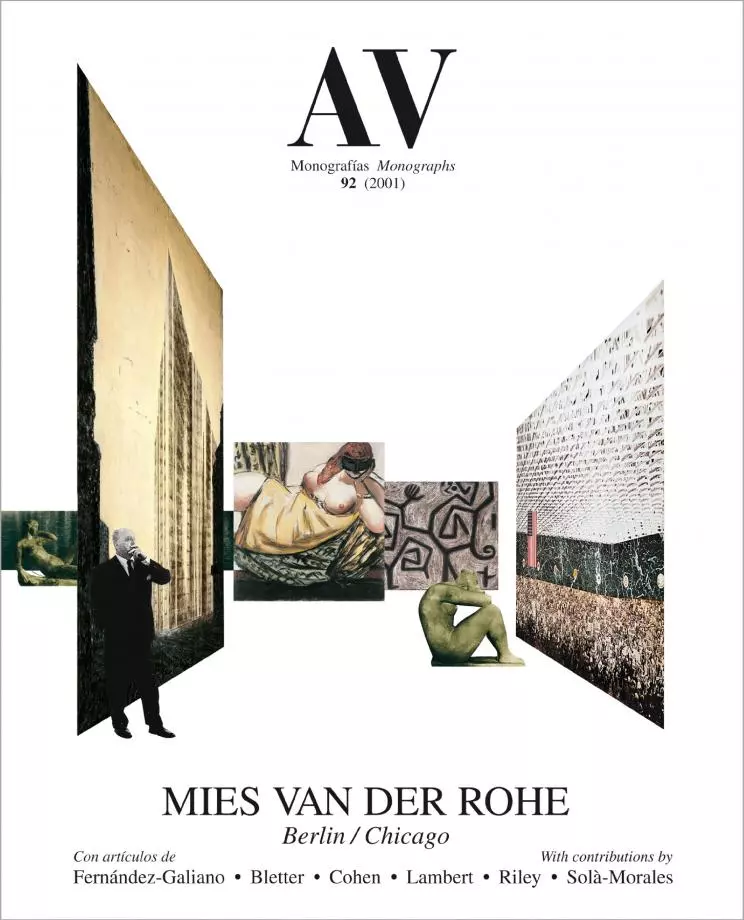
Fifteen years ago, the centenary of the birth of Mies van der Rohe coincided with a period of singular postmodern fervor, and that untimely simultaneity projected an uncertain light upon the anniversary. Even the Museum of Modern Art, which keeps the architect’s archives, offered no more than an obliged apathetic exhibition, and many of the excellent studies arisen to mark this anniversary focused on the shadows of his biography and the sharp edges of his work. The early monograph published by this magazine on the occasion of the event (AV 6, 1986) – with the collaboration, among others, of the architectural historians and critics Martin Filler, Kenneth Frampton, Charles Jencks, Julius Posener and Franz Schulze –, echoed the unpleasant climate of the times, described stenographically in the title of one of my texts in that very issue: ‘Mies is Less: a Revisionist Centenary’.
Fifteen years later the mood has changed, and the two great New York exhibitions in the summer of 2001 bear witness to a new attitude toward the modern master. This monograph of AV relies on the research efforts that have crystallized in the two exhibitions – ‘Mies in Berlin’, organized by the MoMA; and ‘Mies in America’, organized by the Whitney Museum and the Centre Canadien d'Architecture –, and in fact its argumental core is formed by four articles from the catalogs of the respective exhibitions, written by the German-born New York professor Rosemarie Haag Bletter, the French historian and ex-director of the CCA Jean-Louis Cohen, the MoMA’s Chief Curator of Architecture and organizer (with Barry Bergdoll) of the Berlinese exhibition, Terence Riley, and the Canadian philantropist, founding director of the CCA and also curator of the American exhibit, Phyllis Lambert.
These texts offer inedit perspectives both about the European stretch of Mies’s career and of his years in Chicago, and shed light on the vicissitudes that his critical appraisal has experienced after Philip Johnson set up in 1947 the first monographic exhibition devoted to his work. With the aim of fitting these approaches within a pedagogical frame, the articles by researchers are introduced with a summary of the master’s career whose 60 years of creative life are reflected in 60 works that try to show the essential lines of his architectural inquiries. Lastly, the number closes with a portrait of Mies that Ignasi de Solá-Morales wrote for the 1986 monograph, which we would end up replacing by another piece of his on modern representation, and that we publish now as a posthumous tribute to the Catalan architect and historian: few events have been so decisive as his philological reconstruction of the Barcelona pavilion to promote the current state of opinion that makes possible the title ‘Mies is More’.





